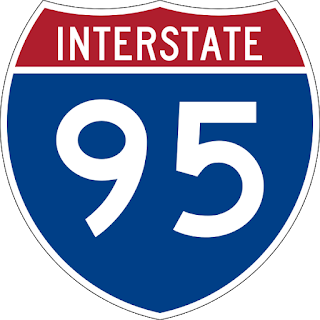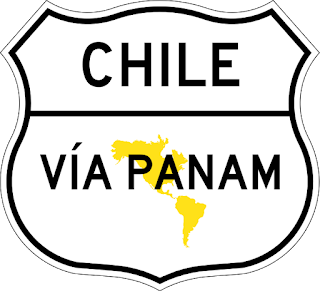This is part of a multi-part post: Tijuana Day Trip
It Started At The Border-A Visit To Tijuana Mexico
Still in Tijuana and Enjoying the Music of Herb Alpert and the Tijuana Brass
Still in Tijuana With Artists Inspired By Herb Alpert and the Tijuana Brass
Rock and Roll in Tijuana-Mexican Style!
Tijuana Remixed: Molotov, Nortec Collective, and Faca
Border Curios Part 1
Border Curios Part 2
Border Curios Part 3
The origins of Highway 101 began in the American border town of San Ysidro. San Ysidro is for all purposes an off shoot of the larger border city of Tijuana Mexico. We will start our journey there. Not only because the highway went there, but also because Tijuana and I have a history. Many a weekend was spent visiting Tijuana, Rosarita Beach and Ensenada Mexico when I was a young man in the 1980's and the northwest corner of Baja California will always hold a special place in my heart. As we will see, there is also some great music is associated with the city.
Tijuana from Wikipedia:
Tijuana (/tiːəˈwɑːnə/ tee-ə-WAH-nə or /tiːˈwɑːnə/; Spanish: [tiˈxwana]) is the largest city on the Baja California Peninsula and center of the Tijuana metropolitan area, part of the international San Diego–Tijuana metropolitan area. An industrial and financial center of Mexico,[2] Tijuana exerts a strong influence on economics, education, culture, art, and politics. As the city has become a leading center in the country, so has the surrounding metropolitan area, a major industrial and paramount metropolis in northwestern Mexico. Currently one of the fastest growing metropolitan areas in Mexico,[2] Tijuana maintains global city status.[3]
On the Gold Coast of Baja California, Tijuana is the municipal seat, cultural, and commercial center of Tijuana Municipality, covering 23.5% of the municipality. A dominant manufacturing center of the North American continent, the city maintains facilities of numerous multinational conglomerate companies. The 2000s (decade) saw Tijuana become the medical device manufacturing capital of North America. Also a growing cultural center, Tijuana has been recognized as a most important new cultural mecca.[4] The city is the most visited border city in the globe; sharing an approximate 24-kilometre-long border (15 mi) with its sister city San Diego, over fifty million people annually cross the border between these two cities. This metropolitan crossing makes the San Ysidro Port of Entry the busiest land-border crossing in the world.[5] It is estimated that the two border crossing stations between the cities proper of San Diego and Tijuana account for 300,000 daily border crossings alone.
Tijuana is the 29th largest city in the Americas and is the westernmost city in Mexico. According to the 2010 census, the Tijuana metropolitan area was the fifth-largest in Mexico, with a population of 1,784,034. The international metropolitan region was estimated to be just over five million in 2009 and approximately 5,105,769 in 2010,[6] making it the third largest metropolitan area in the Californias, 19th largest metropolitan area in the Americas,[7] and the largest bi-national conurbation that is shared between US and Mexico. Tijuana is becoming more suburbanized like San Diego; during the 2000s the drug violence had residents moving out of the congested urban core into isolated communities within the municipality and beyond, as evidenced by 2010 Census figures and growth patterns.
Tijuana traces its modern history to the arrival of Spanish explorers in the 16th century who were mapping the coast of the Californias. As the American conquest of northern Mexico ended with the Treaty of Guadalupe Hidalgo, Tijuana's new international position on the border gave rise to a new economic and political structure. The city was founded in July 11, 1889 as urban development began. Often known by its initials, "T.J.", and nicknamed Gateway to Mexico, the city has historically served as a tourist center dating back to the 1880s.
Tijuana has always had an appeal for Americans who want to experience a taste of Mexico while still spending the night in the United States. Its border crossing is one of the busiest in the world. This video is a short tour guide for the current city:
Tijuana has been a tourist center since the 1880's, but it really began its claim to the American imagination in the 1920's, when thirsty Americans would travel down an early Highway 101 to visit the exotic Mexico where liquor just happened to be legal,. Tolerant Mexican laws regarding prostitution drew a certain class of tourist. Jai Alai, dog racing and bullfighting all drew the sporting crowd and the vice of gambling. Being so close to the Navy bases in San Diego, and reasonably close to Camp Pendleton Marine Base, Tijuana is also a favorite place for military leave. On Saturday nights the Avenida Revolución, the main tourist drag of restaraunts, bars, curio shops and street vendors can be packed with American tourists cutting loose in Mexico as the have since the 1920's.
A little trivia about Tijuana is that the Caesar Salad was invented here. The story is that the chef of Caesars Restaurant tossed together what were essentially some kitchen leftovers together on a Sunday to fill his menu when he was low on supplies one after a particularly lively Saturday night. It proved to be so tasty that it began to be requested by return customers and a legend was born.
Not only a party town, Tijuana has a gritty and somewhat desperate side as well. American owned manufacturing facilities draw workers from rural areas of Mexico for employment within the city. The city also acts as a staging area for immigrants from all over Latin America intending to enter the US from Tijuana, often illegally. Many of these passers through survive in shanty towns near the border as they await an opportunity to attempt a border crossing. In addition, frequently deportees from immigration sweeps in other parts of California are deposited here by U.S Immigration. Release of Mexican prisoners from U.S. jails and prisons into Tijuana have also been reported. Drug cartels have had some significant activity in the city in recent years and the local city police corruption is legendary.
It is a lively and interesting city of contrasts and I am sure will continue to be so for many, many years to come. This video shows many images from the Tijuana of the days when Highway 101 went there. Later Highway 101 would be rerouted to begin in Los Angeles. But before Interstate 5, 101 was the way to visit Tijuana. As a bonus, this video features some music we will be listening to on our playlist in the next few weeks.
Thanks for visiting. Don't forget to sign up for email updates in that little window in the top right corner of the page, And if you have any stories of old Tijuana, please share them in the comments below.
And Now A Word From Our Sponsor...
If you like what you have read here I'd like to ask you a favor. If you purchase any item on Amazon after you link to them in the Amazon banner below, I will get a little something from them. It doesn't cost you any extra and I cannot see what you have purchased.
With your help, I can keep the show on the road for you.
With your help, I can keep the show on the road for you.
You Can Give me a Karma Donation Via PayPal
Keep Traveling!
To read more Old Highway Notes, choose an off ramp and click on the highway sign:
Vista Points
Be social, Get more info, View our YouTube playlist and more










No comments:
Post a Comment